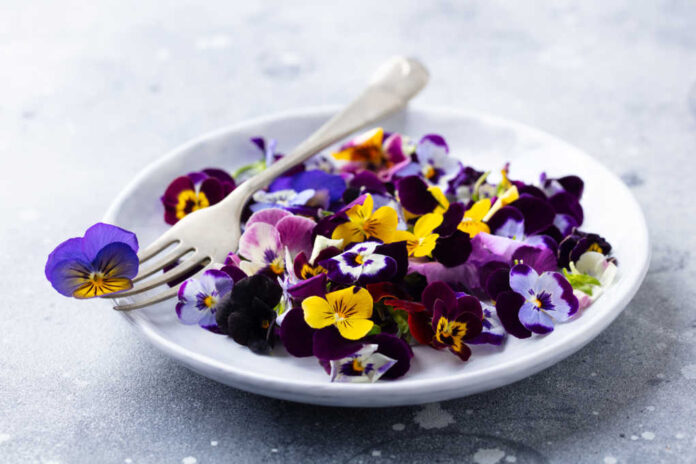
Not all types of flowers are edible, but you might be surprised to learn that many of the flowers in your garden are tasty and nutritious.
Whether cooking for yourself or family and guests, flowers can add a colorful and unexpected highlight to your meals.
Lavender
Lavender is known for its unique fragrance and can be used as an herb or garnish. The slightly sweet, floral taste pairs well with chicken, fish, steak, or rice dishes and fruity baked goods.
Lavender is also known for its calming effect on the nervous system. It can even help relieve stress, anxiety, and depression.
Rose
Avoid the leaves and stems, but the petals of all types of roses can be eaten raw, mixed into salads, or dried and used as an herb.
Rose petals can be infused into an oil or butter or added to jellies and jams. It can even be an aromatic and slightly sweet way to flavor a drink.
Like lavender, consuming roses can also promote relaxation and have anti-anxiety effects.
Pansy
Pansies come in all sorts of colors, typically with a splash of darker color in the center.
Their flavor is light and mild, and their color makes them a popular topping for salads, cakes, and pastries.
Different colored pansies can have slightly different nutritional profiles, but they are all good sources of antioxidants and anti-inflammatory compounds.
Chamomile
Chamomile is commonly used in tea, but it can also be infused into syrups or oils or cooked as an herb.
Its mildly sweet and earthy flavor goes well with a variety of dishes, and it has a calming effect that can help relieve insomnia and anxiety.
Dandelion
Although many people regard dandelions as an annoying weed that invades their lawn, it is very nutritious, and every part – the leaves, the yellow flower, the stems, even the roots – can be consumed.
The leaves have a slightly bitter, green flavor that is perfect for salads. Some people enjoy steeping the flowers and leaves in tea or cooking them in a stew.
Everyone can benefit from the antioxidants found in dandelions, but they appear to be incredibly therapeutic for people living with type 2 diabetes.
Hibiscus
The large flowers of the hibiscus plant can be steeped in hot water to make a tea that can be great for your heart. It can lower blood pressure and cholesterol levels and help manage or prevent cardiovascular disease.
Hibiscus can also be added to jams, relishes, and salads for a tart, tropical flavor.
Trying New Flavors
Flowers are a great way to add excitement to your meals and experiment with new flavors. They are beautiful, but they are also nutritious and offer a wide variety of health benefits.
So next time you are in the garden or at the grocery store, pick up a few flowers and see what delicious dishes you can create.






















